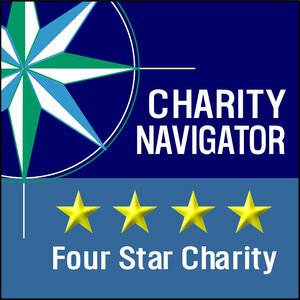by Jeff Mundell
When Kristin asked if I would be willing to be the keynote speaker at the National Cowboy Poetry Gathering in Elko, I wasn't sure what to talk about. I asked my partner Kate for some suggestions, and she immediately said, "Archetype."
According to Webster's Dictionary, an archetype is "a very typical example of a certain person or thing." Personally, I am fascinated by rugged individuals who dedicate their lives to tending and herding animals. Among the various categories of such individuals, I have been particularly drawn to horse cultures and, within that category, I fell in love with cowboy culture.
As a child raised in town, I often felt lost. However, my grandparents owned 10 acres of land outside of Red Bluff, California, and whenever I visited, I would immerse myself in the wild surroundings. Snakes, bugs, birds—they all became my friends, and everything made sense in that natural environment. I would spend hours gazing at and interacting with the wildness and its inhabitants.
When I was around 12 years old, I went to stay with my Uncle Craig. I didn't know him well, as he became my uncle when my mother remarried. However, during our visit, I had my first encounter with “The Cowboy” archetype. Uncle Craig was quite a figure—solid-shouldered with a firm handshake, and his eyes seemed to see deep into me. He had a way of perceiving everything in just a glance. As the grown-ups talked, I grew bored and wandered down a hallway, only to find a room filled with saddles, bridles, and various types of horse tack. The room smelled of horse sweat and leather, and my curiosity turned into pure excitement. People still do this? Cowboys are a real thing? How can I be a part of it?
My uncle must have sensed my fascination from the front room because he asked my parents to bring me back. And so my journey into the horseback world of the cowboy began. Over time, I fully immersed myself in cowboy culture. I would tag along with any cowboy or cowgirl who would take me. I started to move and talk like them. My hands became hardened in the same places where theirs were calloused. I developed crow's feet from squinting in the sun and all the other distinguishing marks that set these individuals apart from the masses.
I would often hear people say things like, "We are the last of a dying breed." It was a strange feeling that used to fill me with a mix of sadness and pride, like the last shoemaker in a town or the last blacksmith. Chest out, jaw tight, pounding away on hot metal, knowing that he was the last one practicing this trade. He would scowl at new technology, and if you asked him a question, he would look at you as if you were the dumbest creature on the planet. He transformed into a badger.
I have witnessed this sad pride take hold of many industries that were not appreciated or valued enough in our current culture. These industries or trades gradually fade away, and valuable knowledge is lost. It seems to me that there is a yearning today for these craftsmen and trades to make a comeback.
Today, pressure to remove beef from our diets, cattle from our rangelands, and cowboys from our lexicon is a very real concern. A lot of us have that “last of a dying breed” look in our eyes.
About 10 years ago, I was offered the opportunity to manage the Gabilan Cattle Company. This large land base is set in the very heart of the California coast. Although the owners of this landscape held solid onto “The Cowboy” archetype—with everything from chuck wagons, to a saddle-horse cavvy, to cowboy hats and an incredible work ethic—they had an interesting conservation vision for the future. The question we asked was, how can we manage this cow herd to improve the health of the ecosystem and strive toward profitability?
We set out to learn all we could…what California cattle ranching, and land management as a whole, is going to look like in the future.
We set out to learn all we could. The ranch owners went to conferences, joined steering committees, took a seat on the board of a land trust, and served on advisory boards for The Nature Conservancy. The owners of this landscape tried to get their finger on the pulse as to what California cattle ranching, and land management as a whole, is going to look like in the future. What we found through our searching was groups of scientists who were looking for answers to their own questions. Questions like, how can they manage invasive grasses? How can they protect sensitive species? How should they best manage riparian areas and watersheds? How can they reduce fire risk? How can they enhance below-ground carbon storage? How can they stop the conversion of rangelands and open space to other uses? How can they create wildlife connectivity?
A lot of my ranching friends stop listening once I begin to speak about working with these groups, and rightfully so. Conservation groups and environmentalists have a storied history of friction and incompatibility with ranchers. That history is long, the wounds are deep and painful. Some ranchers have lost their livelihood due to decisions made by people with no skin in the game sitting hundreds of miles away. People who are trained to see their area of expertise and not the whole picture. This has led to not only a hard relationship to heal among ranchers and conservation-minded groups, but has also led to an incredible amount of unintended consequences. And, we need to own our parts. The non-ranching community has watched us change waterways, poison predators, and introduce and spread invasive plants, which has also led to an incredible amount of unintended consequences.
Fortunately, most of these conservation groups are data driven. Their scientists and board members are very good at fleshing out the data and spotting trends. This means, over time, these groups are now finding that the removal of cattle has led to a loss of biodiversity, an increase in fire fuel vegetation, an increase in invasive grasses, and a loss of habitat for sensitive species.
What does this mean for us now?
I believe it means now is the time to edit our archetype. What does editing our archetype look like?
It seems that most ranchers are so busy trying to make things work in a commodity beef industry that we have lost our wildest parts. We are wild folk who swing in stirrups as our horses pull the country under their belly. We can wake up from a dead sleep and smell our landscapes calling to us. We saddle up in freezing rain to get a calf pulled. We feel when the frost or the dew sets in. We know what it means to see a tarantula out walking around. We see the elk calve, coyotes welp, and bears walk out of their dens. We risk our entire existence to push down a fire just to save our landscapes. Our peripheral vision can see when the wolves move in, it can pick up a lightning strike 40 miles away, or perceive how the leaves rustle when an earwig walks across them. We know how creatures move when the moon is full and how the animals will calve when a storm builds. This is who we are, all of it is the sinew that holds us together.
The question now is, how do we move forward? How do we adapt to become leaders in land stewardship? How do we do it embracing a horseback cowboy culture?
Over time, it seems like we have gotten good at taming the country to fit our needs because easy country makes living easier for cows. But I don’t see these ranches getting bigger or more ranchers getting into ranching. I see people buying ranches for conservation. I see people parking their money in large landscapes who understand their value as a slow growth investment. These landowners might not understand the value or relevance of a horseback cowboy culture, and would love to see more bears, elk, wolves, and bison. This shift is already upon us. The question now is, how do we move forward? How do we adapt to become leaders in land stewardship? How do we do it embracing a horseback cowboy culture?
This has already started to happen as ranch kids head off to college to become scientists in wildlife biology, fire, range ecology, and other areas which will impact the future of their landscapes.
...most of the ranchers I know are a people who move through the world with an unspoken language...When the wise speak, it is usually in a story.
I have found that most of the ranchers I know are a people who move through the world with an unspoken language. We spend our days out with livestock that speak almost zero English. We communicate with looks, gestures, and feel. When the wise speak, it is usually in a story. Hidden nuggets of wisdom and serious humor. This is difficult for scientists to suss out.
Our ability to walk into a room of scientists and speak in the language they understand is what I am now trying to learn. As I am speaking to scientists and systems thinkers I see their facial expressions. If they wince or disconnect, I ask them later to guide me as to where I failed to communicate my message. I no longer use terms like “feed” when I talk about grass. I use names like “purple needlegrass” or “Stipa pulchra.” These are plants that scientists want to see thrive—native plants that need help from domestic grazers to thrive. Domestic grazers are not just “beef,” they are hooves and mouths that create incredible disturbance with which these grasslands evolved. This disturbance event can be both nimble and prescriptive.
Most ranchers are already doing amazing work but because our heads are buried in our day to day of keeping our critters healthy, chasing water, gathering herds to new grass, shoeing horses, branding, calving, putting up winter feed, and all the other things it takes to keep things moving forward, we usually fall short when it comes to collecting data. It’s a bandwidth issue that has crept into our back door.
I see a fusion of potential. A fusion of cowboy culture putting large herds of cattle back on the land, living with the herd in full pastoral fashion. A fusion of teams of biologists collecting data on plant species’ richness and spacing, doing bird counts and soil samples and any other data collection needed to measure ecological health. This is a horseback endeavor. We can decide how we want this to look. We can edit our archetype.
Jeff Mundell
Growing up as a lost kid in town, Jeff Mundell was captivated by the allure of buckaroos–and their embodiment of freedom and resilience. Remarkable mentors guided him in the ways of early California-style horsemanship, craftsmanship, stockmanship, and art, igniting in him a deep love for the culture and its people. Jeff has dedicated his existence to unraveling the intricacies of this way of life and advocating for its significance in today's fast-paced, technology-driven world. Currently serving as the manager of the Rancho Cienega del Gabilan, Jeff finds himself at the forefront of discussions centered around safeguarding open spaces, managing vegetation for fire fuel reduction, combating invasive species, creating wildlife connectivity, and enhancing ecosystem function on rangelands. Through involvement in these critical conversations, he seizes every opportunity to convey the relevance of this horse culture and our role as stewards of the vast landscapes of the American West.
Watch More From Jeff:
What Does Regenerative Agriculture Mean?
FEATURING: Alexis Bonogofsky, Jeff Mundell, Liz Munn, Jared Sorensen.
What is regenerative agriculture? How is it done? What does it mean? Join Alexis Bonogofsky, Jeff Mundell, Liz Munn, and Jared Sorensen to hear from producers about the challenges and opportunities of taking a regenerative land management approach to food production. Panel participants will include ranchers, growers, agroecologists, soil health practitioners, and conservation organizations working with a variety of tools to regenerate landscapes, be it through grazing practices, soil restoration techniques, or other holistic management practices. Learn about the differences and similarities in approaches regionally and internationality. And, address the big question---could regenerative agriculture really change the world?
Hosted by Dave Voth.
Watch on Western Folklife TV
Presented in partnership with the Humanities Center at Great Basin College, which is made possible with significant support from the National Endowment for the Humanities. Filming made possible by the E. L. Wiegand Foundation.













